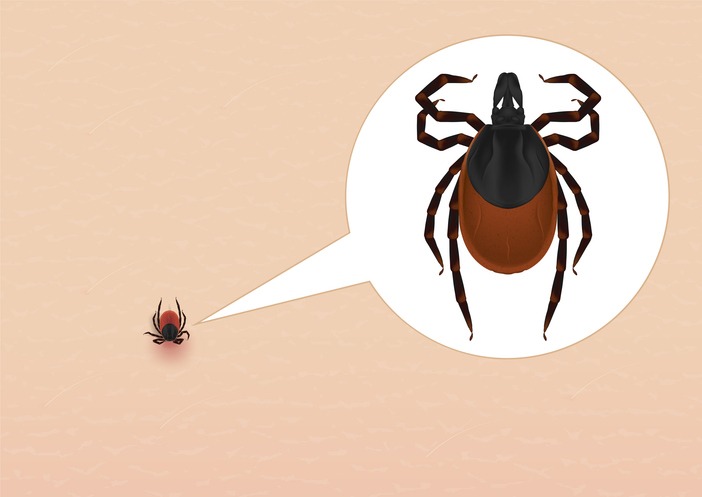
Prevention is the best cure, but what should you do if you suspect you have Lyme disease? Find out more about this infection here as well as possible treatment options
CREDIT: This is an edited version of an article that originally appeared on The Independent
Experts have warned Brits to stay aware of the symptoms of Lyme disease as the infection is on the rise.
Individuals who spend the majority of their time outdoors are most at risk of being exposed to the ticks which spread the disease, the National Institute of Health and Care Excellence (NICE) states.
While certain regions have a higher reported incidence of Lyme disease, such as south-east England, south-west England and Scotland, NICE outlines that the disease can be caught in any area of the UK.
What is Lyme disease?
Lyme disease is an infectious disease caused by the bacterium Borrelia burgdorferi.
It is typically spread to humans via infected ticks, which will have already bitten an infected animal such as deer, mouse, vole or hedgehog. Other insects also carry the disease.
Ticks with Lyme disease can be found across the UK, but are most prevalent in grassy, wooded areas.
They are most active between March and October.
The disease was first reported in the US in 1977 in Old Lyme, Connecticut, hence how it acquired its name.
What are the symptoms?
Symptoms can differ from person to person, but many people with Lyme disease will develop a circular red ‘bullseye’ rash around the tick bite within four weeks of being bitten.
However, not all those infected will develop a rash, the NHS states, with some people experiencing flu-like symptoms, such as headaches, joint pain and a high temperature.
According to new draft guidance published by NICE in February, doctors are advised not to wait for a potential Lyme disease patient’s blood test results if they have a ‘bullseye’ rash.
“If a characteristic bull’s eye rash is present, healthcare professionals should feel confident in diagnosing Lyme disease,” said Professor Gillian Leng, director of health and social care at Nice.
While most tick bites are harmless, you are advised to seek help from your GP if you’ve recently been bitten by a tick and subsequently experience the aforementioned symptoms.
Research has also linked Lyme disease to a series of neuropsychological conditions, such as depression and anxiety.
How is it treated?
Lyme disease, when recognised, is usually treated with a course of antibiotics prescribed by a GP.
Those experiencing severe symptoms – such as extreme fatigue, chronic pain and/or depression – may be referred to a specialist for stronger antibiotics.
The majority of those infected will make a full recovery within a few months.
However, infection does not lead to lifelong immunity, and it is possible for sufferers to be re-infected and develop the disease again.
How can you prevent it?
The NHS advises covering your skin when walking in wooded and grassy areas, suggesting tucking your trousers into your socks.
Insect repellent can also be helpful in detracting ticks, while wearing light-coloured clothing can make them easier to spot and brush off.
What to do if you’re bitten by a tick
If you are bitten by a tick, you may not necessarily notice it as they aren’t always painful.
If you spot one on your skin, you should use either tweezers or a specialist tick-removal tool to pull it upwards and out of your skin, the NHS recommends.
Dispose of the tick safely, ensuring you do not squeeze it, and clean the bitten area with antiseptic.
How common is it?
According to the NHS, around 1,000 cases of Lyme disease are serologically diagnosed in England and Wales every year. Public Health England state that the true number could be around 3,000 per year.
Incidents of Lyme disease may also be confirmed without any need for testing in a laboratory.
NICE adds that the “true number of cases is currently unknown”.


Be the first to comment